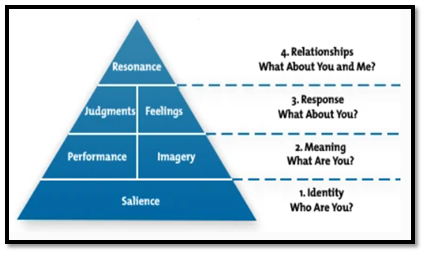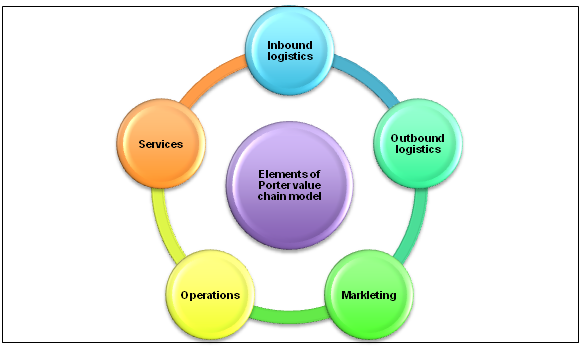Strategic Management Assignment Illustrating Strategic Approach of Zara
Question
Task: Write a detailed strategic management assignment focusing on the theoretical context that relates the strategic approach of Zara and describes the methodology in brief.
Answer
Introduction
Strategic management can be defined as the approach to defining the organizational objectives, goals to provide a better competitive advantage to the organization and increase the profitability of the organization. This strategic management assignmentis going to shed light upon the strategic and transforming business opportunities to Zara to provide sustainability to the business by correlating the theoretical framework and proceeding with the methodology part.
A theoretical framework based on Competition theory, Core competence model and Customer based brand equity model
A competitive model framework is considered as the model or framework that provides a better competitive advantage to any firm by considering different competitive factors. Competition is considered as the most crucial as well as an effective mechanism to regulate the market process that provides financial freedom and economic stability to the firm and can encourage the organization to increase competitiveness (Gusarenko and Streltcov, 2020). The level of competitiveness of the industry as well as specifically of an organization
harshly depends on the country, area, region, and also the economic growth of the country as well as organization. The competition model or theory in recent days is considered as the market analysis method. The term competition reflects various aspects such as excessive competition, market presence, and many more. Ly (2021) has stated that tremendous competition makes the market economy fluent and works without any hitch.
On the other hand, this theory also reflects the three basic mechanisms based on ethnicity and racial conflict in society. This competition theory of sociology and race and ethnic relationship reflects that the decline of inequality among the regions can increase the ethnic conflict and reduce the engagement of different ethnic groups. Thus, Gusarenko and Streltcov (2020) have suggested that niche overlap can be a major factor related to this model that can increase the race or ethnicity in society.
It has also been argued that the ethnic conflict arises when the ethnic group from the same nations comes into the computation in the same market and can increase the sets in social as well as economic aspects also. It has also articulated that competition does not slow down the growth of the sectors but helps the sector to identify the gaps that currently exist within the industry and make the industry stable and sustainable from the global perspective. This can be exemplified by Zara's brand development strategy based on the cultural attributes within the society. Zara has designed the products based on the customer demands and allows the customer-centric approach that increases the customer base. However, competition among Levie's, Burberry, and Zara makes this theory justified.
Core competence theory
The core competency model is one of the strategic approaches that has been considered by the firms in case of market analysis that suggests the firms take necessary actions to gain better competitive advantage from this recent competitive market. The concept of the core competence model reflects that the firms should take decisions as per the strengths and play according to their strengths in the fields that can provide a better ground to the organization. In the case of Zara, it can easily be articulated that it is one of the most renowned fast fashion brands in the global market and its brand communication strategy is the most unique as well as authentic that provides a better ground and competitive advantage to the organization (Žemgulien and Valukonis, 2021). Applying this theoretical context Zara has made a strategy that can be defined as the zero advertising policy or instore digitization policies that can increase the in-store experience of the customers in the recent pandemic situation and can restore the dependability on the fashion products that have been offered by Zara.
On the other hand, it has also been found that the core competence model that has been dependent on four major factors such as sustainability, functionality, beauty, and clarity are also inimitable for the competitors. One of Zara's success strategies lies within customer co-creation of Zara that reflects the service provided by Zara to the customers (Thorisdottir and Johannsdottir, 2019). Based on customers' demand Zara furnishes the stores and provides proper satisfaction to the customers. This can be exemplified by the selling of pink scarves in almost 2000 stores when the demand for pink scarves had tremendously increased and the stores were packed within a week. The values of customers provide a better competitive advantage to Zara and can be correlated with the core competence strategy and framework of Zara. However, as a recommendation, it can be demonstrated that technical superiority can be one of the biggest competitive factors of Zara according to the model.
CBBE Brand equity model
"Keller's Brand equity model" also known as the "Customer-based Brand Equity Model" reflects the concept of developing a strong and sustainable brand. Tasci (2018) has articulated that the perception of the customer is the most important thing in this context as the brands must be designed as per the requirements of society. Strong brand equity allows the customer to engage more with the brands and increase the sales of the organization. Salience, performance, imagery, judgments, feelings, and resonance are the six factors that directly relate to and define the positioning of the brand. Four factors like Brand identity, brand meaning, brand response, and brand resonance are the four major steps that define the brand equity model more accurately. These four steps are briefly discussed-
In the fast-fashion sector, Zara is one of the leading brands to satisfy customer needs by delivering new trends in fashion (Su and Chang, 2018). However, the fabric quality and price segment of Zara makes the customers go with the brands and creates a certain satisfaction after buying the products. Delivering new trends is the top priority of Zara that attracts a younger base from the market to get a better competitive advantage. On the other hand, to get customer feedback about the products Zara can develop a comprehensive customer service model to get customers' feedback and improve the customer base.

Figure 1: CBBE brand equity model
(Source: Influenced by Tasci, 2018)
Research methodology
SWOT framework of Zara:
|
Strength Market leader in the fast fashion industry Strong global presence with above 2300 stores. It increases the revenue of Zara up to 1956.4 Crore EURO in 2019 and brand value$ 14.7B (Forbes, 2022). Sustainable supply chain model that provides better competitive advantage Customer-centric approach increases customer base
|
Weakness Limited marketing and advertising policy (Duoyan, 2021) Limited merger and acquisition strategy unlike others
|
|
Opportunities Rapid focus on digital marketing and advertising can increase sales of Zara. Product differentiation can be acquired to capture demographic of the market (Berbiche and El Alami, 2020) |
Threats Excessive competition in the fast fashion industry Economic downturn due to covid 19 reduced sales of Zara. The impact of covid19 reduced the sales of Zara to 20.4 Billion that was 8 Billion less than the previous year (Statista, 2022). |
Table 1: SWOT framework
(Source: Self-developed)
Porter’s five forces analysis of Zara
|
Factors |
Analysis |
Impact |
|
Bargaining power of suppliers |
Globalization makes the fashion industry more liberal and makes the supplier's power a weaker force for Zara (Thorisdottir and Johannsdottir, 2019).
|
Low |
|
Bargaining power of buyers |
Due to immense computation in the fast fashion sector and low switching cost of buyers make buyers more vulnerable to Zara. However, approximately 1200 Zara stores have closed during the pandemic which can shift the interest of customers to other competitors (The Guardian, 2022).
|
High |
|
Threats of new entrants |
Zara is one of the leading fast-fashion sectors that has been operating approximately 3000 stores globally and operating approximately in 88 countries and the competition among the sectors makes this factor a weaker force
|
Low |
|
Threats of substitution |
Due to the sustainable supply chain of Zara, the delivery and production of goods become crucial and the strength of that organization (Varley et al. 2018). However, the products delivered by competitors like "Blueberry, H&M, Levies's" also serves the same p[urpose and make this force moderate for Zara.
|
Moderate |
|
Competitive rivalry |
The competition among the industry is so high due to the social lifestyle of the customer base. It has been found that the competition has increased by 15% in post-pandemic situations With a compound annual growth rate of 21.9% in 2021. Forever 21, Gap, H& M are the biggest competitors of Zara.
|
Low |
Table 2: Porter’s five forces framework
(Source: Self-developed)
Porter’s value chain analysis
Inbound logistics: Products delivered by Zara are transparent to all the stores and an efficient supply chain brings together the manufacturing unit from different continents. On the other hand, brand positioning strategy helps this brand to get a better competitive advantage, and the production of bulk products makes the organization economical.
Operations: Zara operates more than 2300 stores worldwide and the "Customer co-creation and customer-centric approach" helps the organization to deliver products at reasonable prices.
Outbound logistics: Zara's zero investment advertising policies make it unique and digital store development policy can increase customer base but also reduce sales from the global market. However, Zara lost 40% of sales that cost approximately 480 Billion USD in the pandemic situation (Statista, 2022).
Marketing and service: The zero investment in digital marketing along with digital store creation is the process of marketing and the help desk portal and live customer feedback are services provided by Zara (Ricciotti, 2020).

Figure 2: Porter value chain framework of Zara
(Source: Influenced by Ricciotti, 2020 )
Conclusion
This study has focused on the theoretical context that relates the strategic approach of Zara and describes the methodology in brief.
Reference list
Berbiche, N., Hlyal, M. and El Alami, J., 2020, April. Exponential success through integrated supply chain optimization, ecomotional intelligence and reputation-based leadership: Zara model. In IOP Conference Series: Materials Science and Engineering (Vol. 827, No. 1, p. 012058). IOP Publishing.
Duoyan, H., 2021, April. Research on ZARA Strategy from the Perspective of SWOT Analysis Method. In 2021 6th International Conference on Social Sciences and Economic Development (ICSSED 2021) (pp. 201-205). Atlantis Press. Ly, B., 2021. Competitive advantage and internationalization of a circular economy model in apparel multinationals. Cogent Business & Management, 8(1), p.1944012
Gusarenko, D. and Streltcov, D., 2020. Competition theory and market features.
Su, J. and Chang, A., 2018. Factors affecting college students’ brand loyalty toward fast fashion: A consumer-based brand equity approach. International Journal of Retail & Distribution Management.
Žemgulien, J. and Valukonis, M., 2021. Organizational Competence in Managing Transformation. ACCOUNTING.
Thorisdottir, T.S. and Johannsdottir, L., 2019. Sustainability within fashion business models: A systematic literature review. Strategic management assignmentSustainability, 11(8), p.2233.
Varley, R., Varley, R., Roncha, A., Radclyffe-Thomas, N. and Gee, L., 2018. Fashion management: A strategic approach. Macmillan International Higher Education.
Tasci, A.D., 2018. Testing the cross-brand and cross-market validity of a consumer-based brand equity (CBBE) model for destination brands. Tourism management, 65, pp.143-159.
Statista, 2022. Inditex Group: global sales 2020 | Statista. [online] Statista. Available at:
The guardian, 2022. Zara owner to close up to 1,200 fashion stores around the world. [online] the Guardian. Available at:
Forbes, 2022. Zara. [online] Forbes. Available at:
Ricciotti, F., 2020. From value chain to value network: a systematic literature review. Management Review Quarterly, 70(2), pp.191-212.












